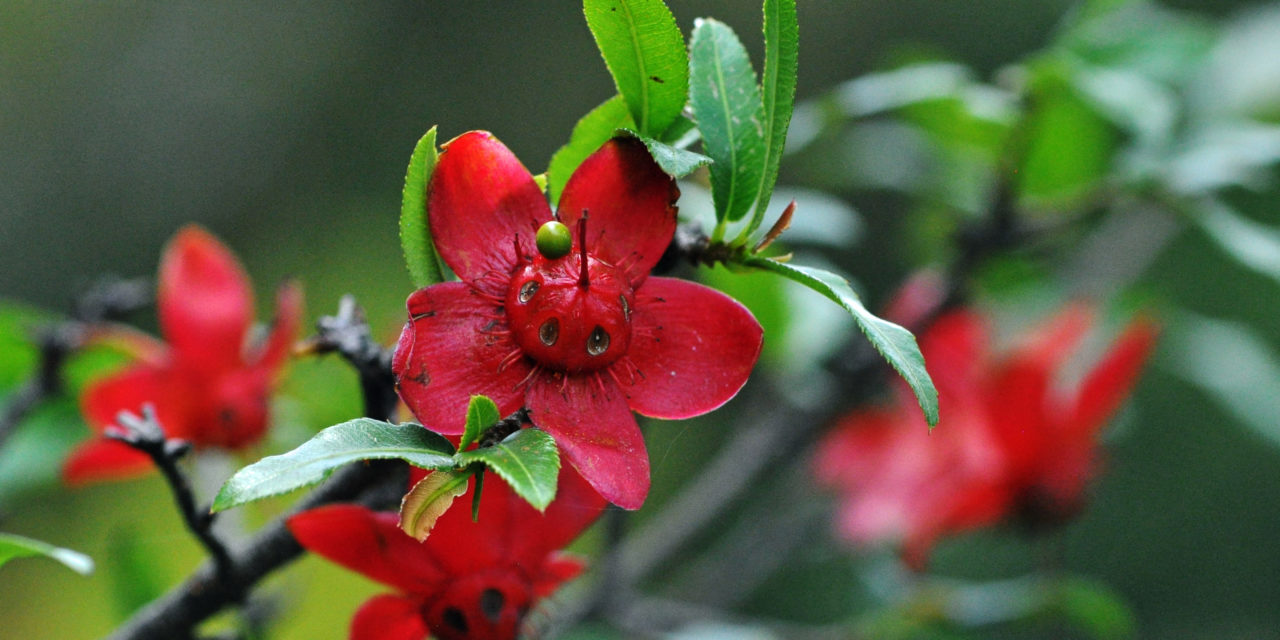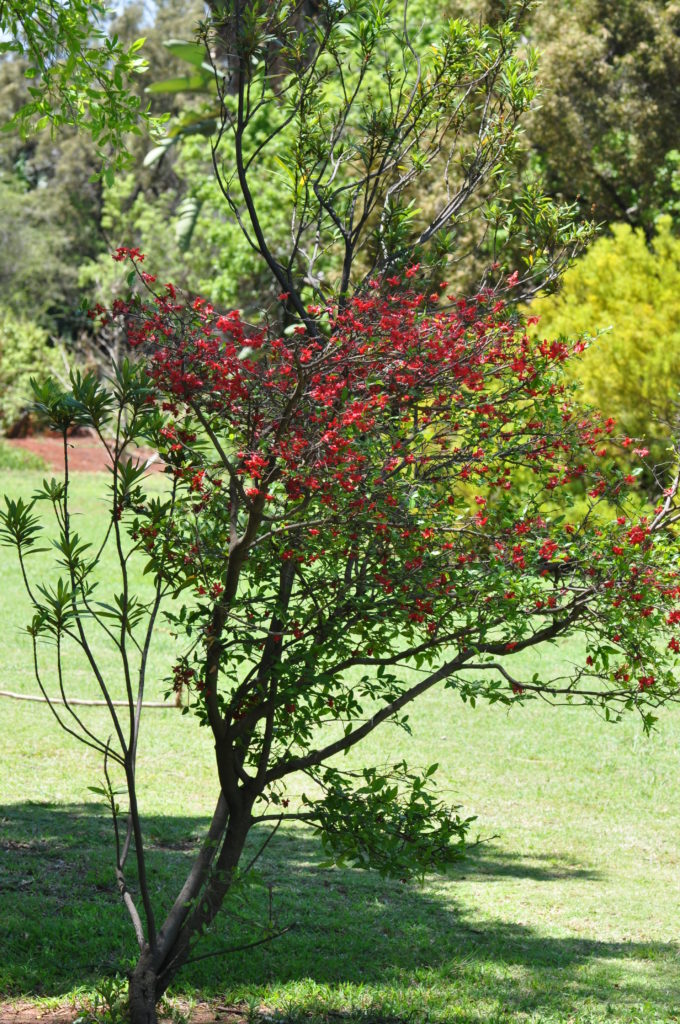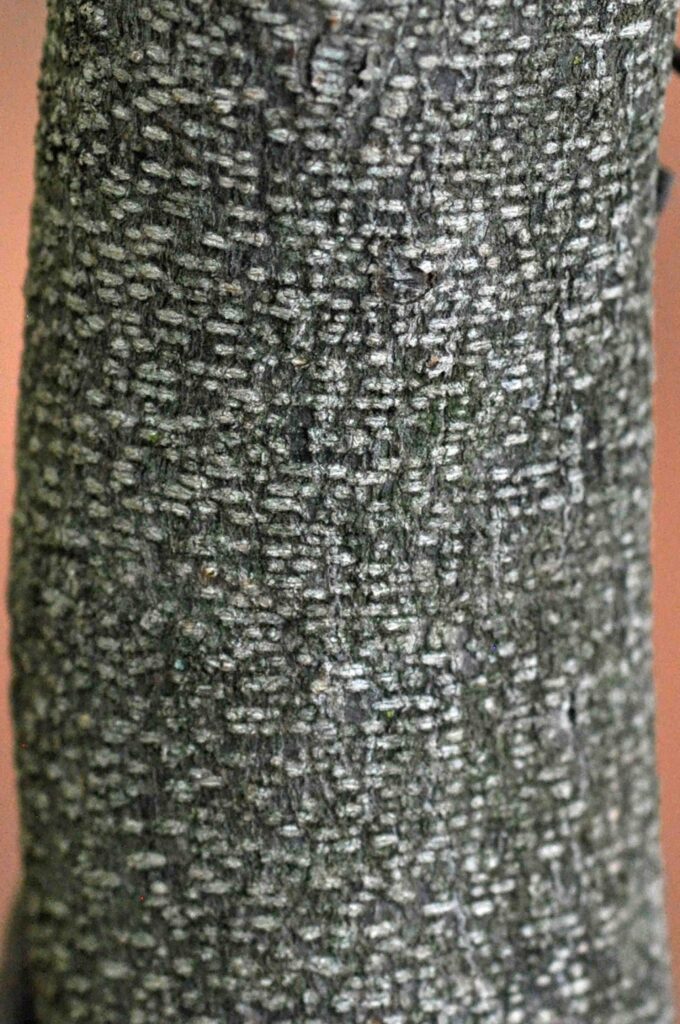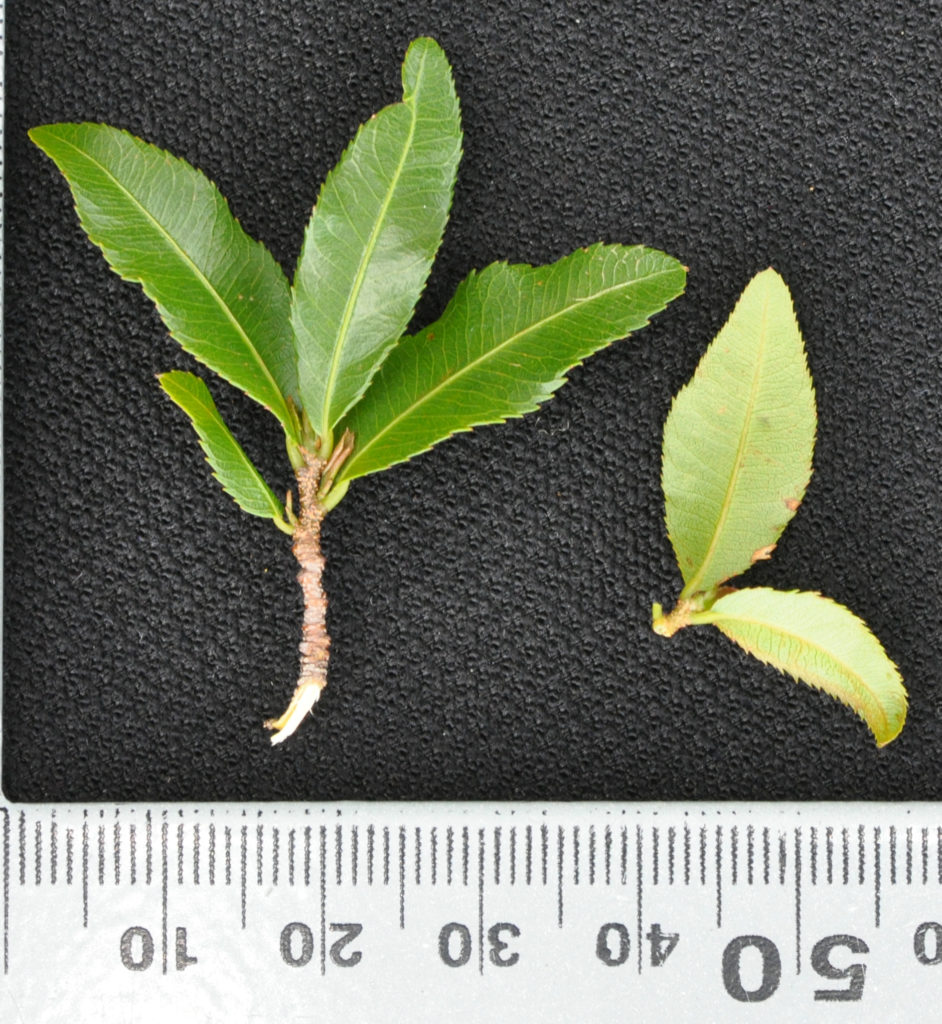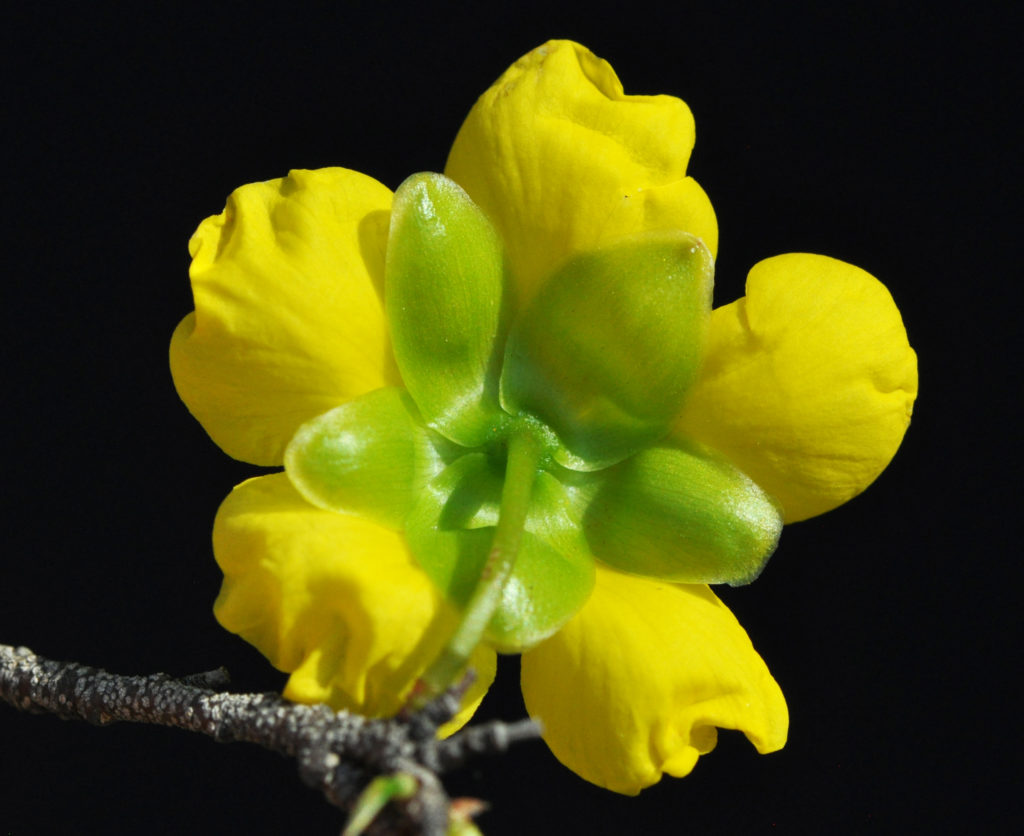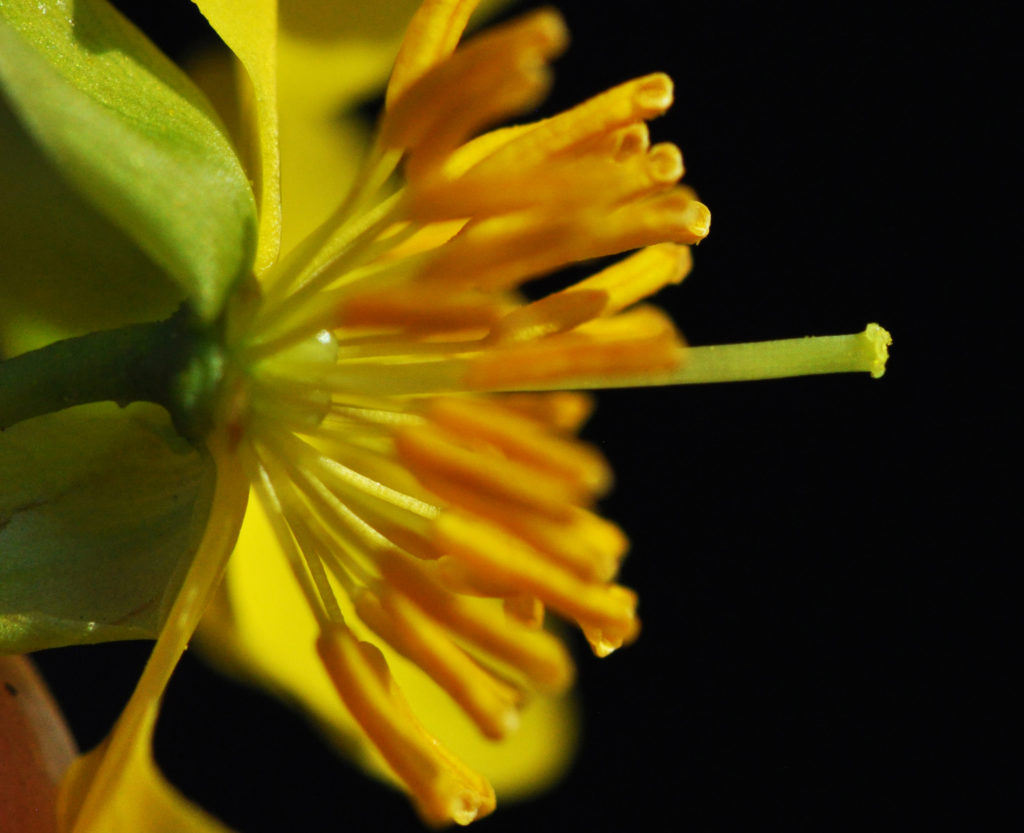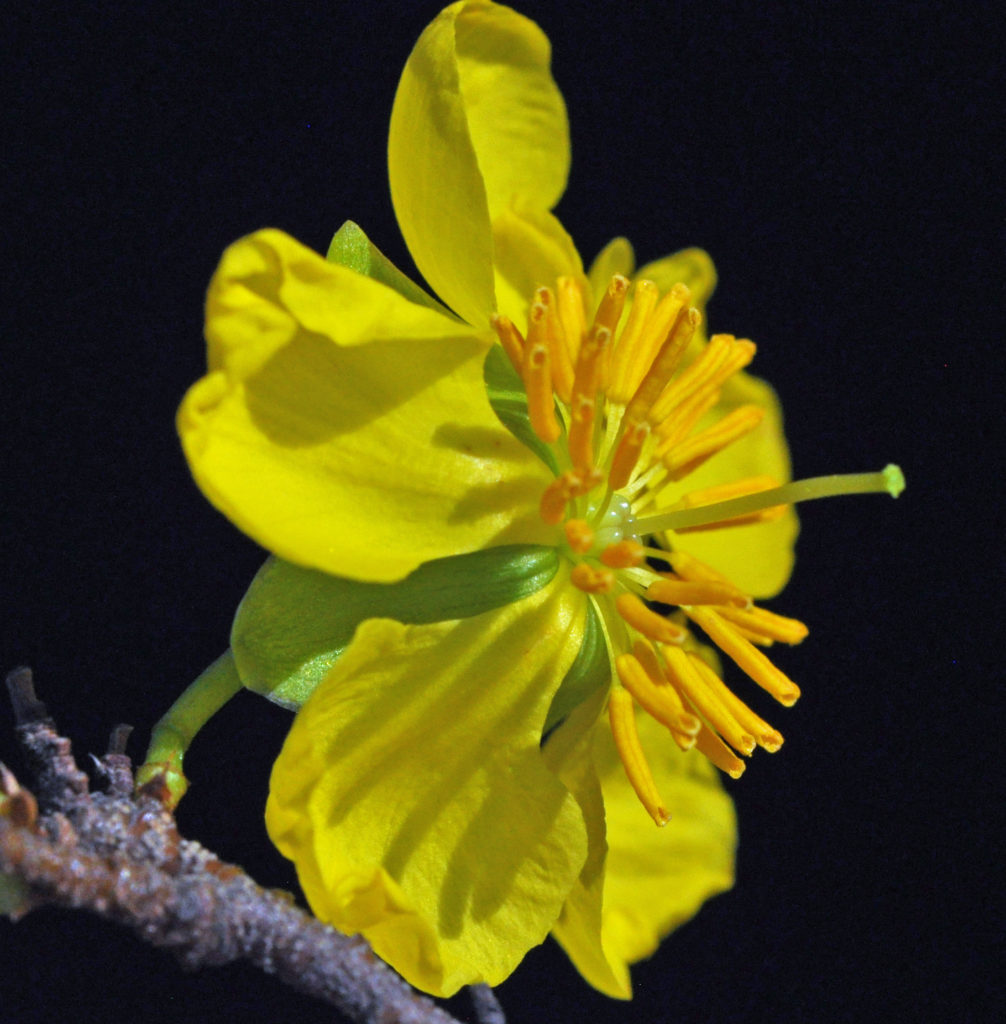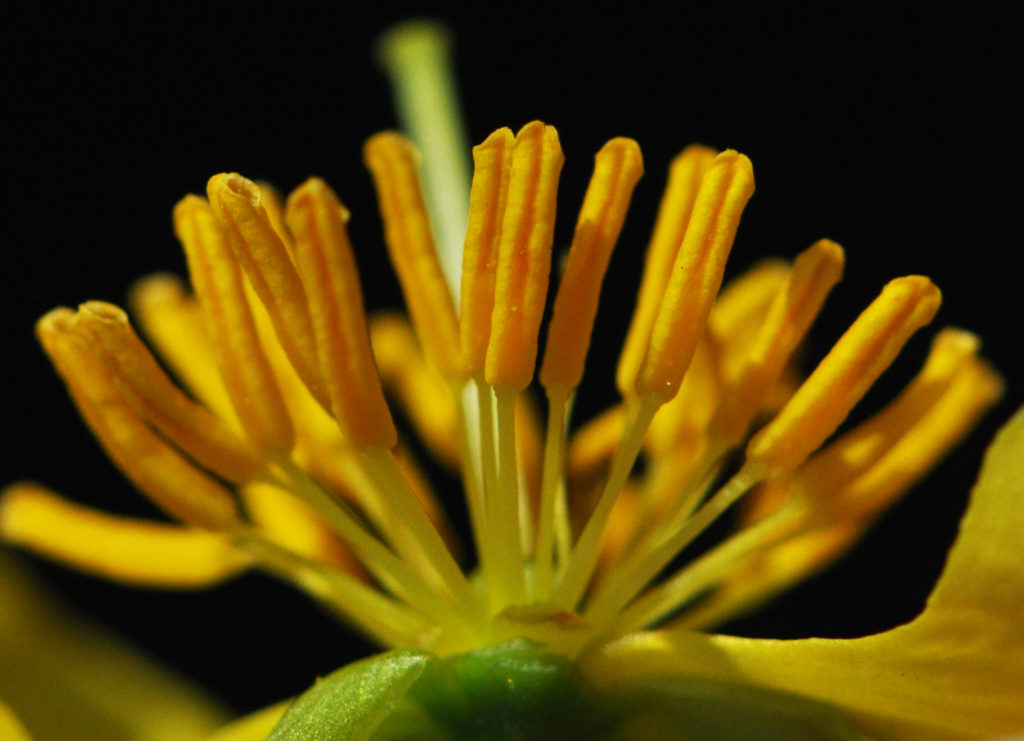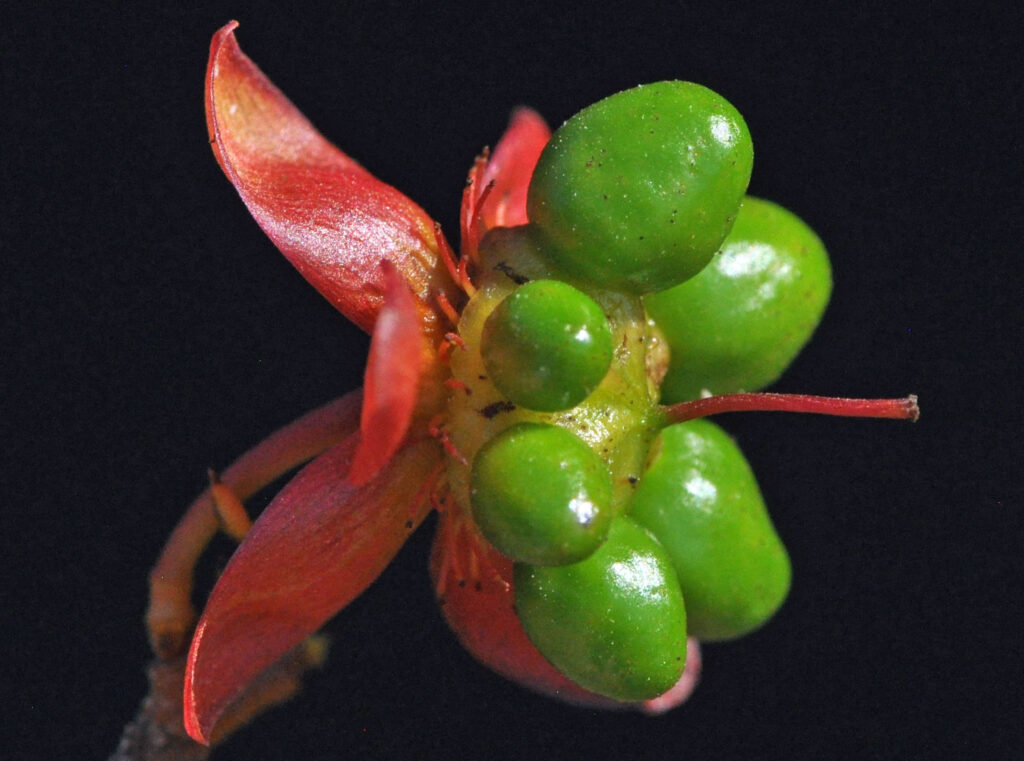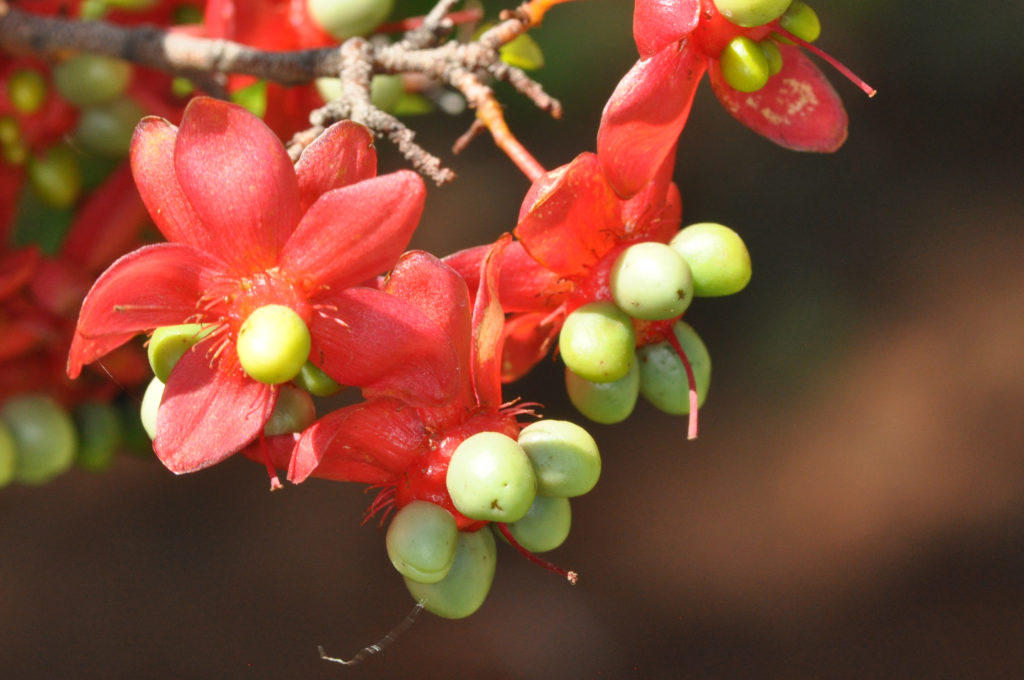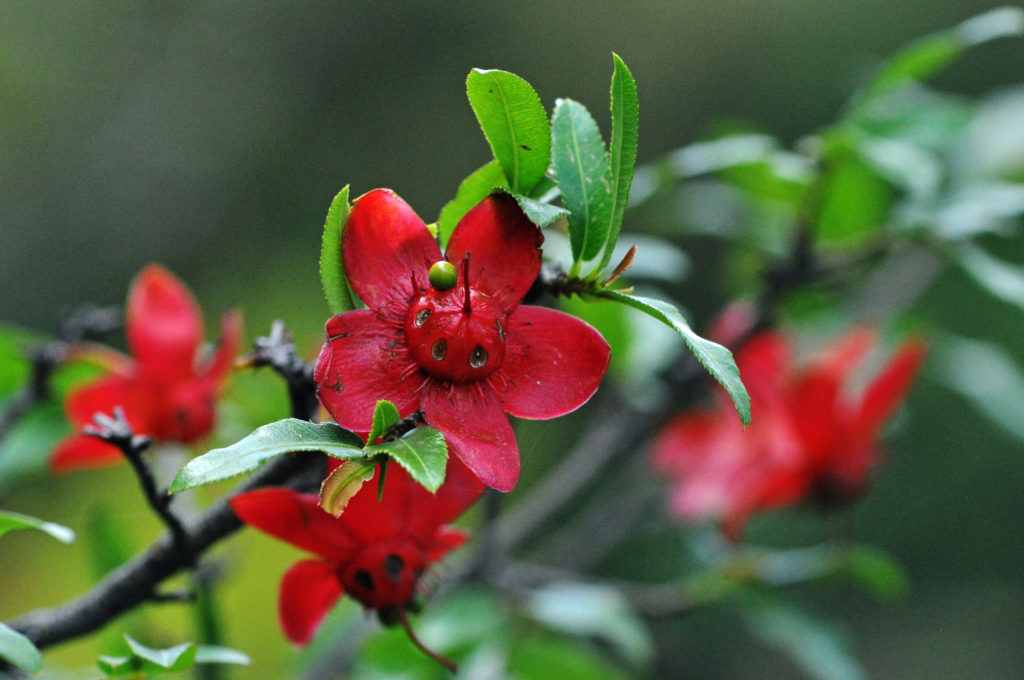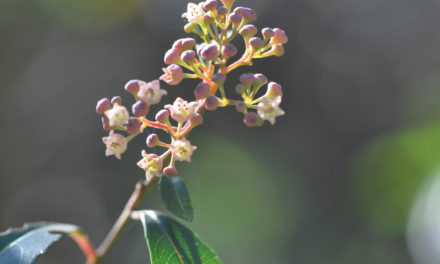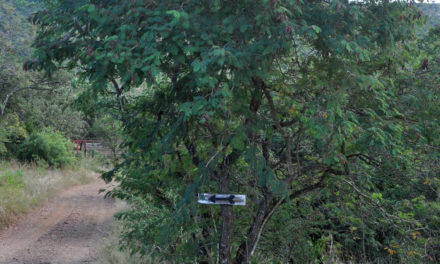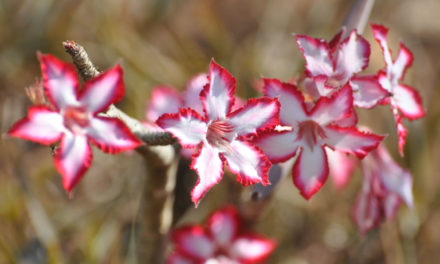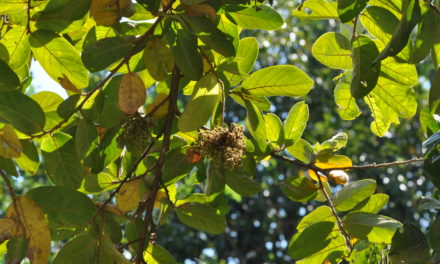General Info – summary
Both the flower and fruit contribute to making this shrub/Tree decorative. It is endemic in southern Africa and usually up to 2+m high. The smooth young bark has distinctively visible lenticels. Simple Leaves are serrated. Bisexual, regular, Flowers are yellow. Once the petals fall, the accrescent calyx, as well as the style and pedicel turn red. Each Fruit develops up to 6 one-seeded drupes on the now red receptacle.
Description
Ochna serrulate
Previous Names: Ochna atropurpurea
SA Tree No. 479.1.
Common names: (Afr) Fynblaarrooihout, Rooihout. (Eng) Carnival Ochna, Carnival Redwood, Mickey Mouse bush, Small-leaved Plane. (isiZulu) Umbomvane. (siSwati) Sifubasenkhala.
Family Ochnaceae. This family has about 30 genera and about 250 species. In South Africa, there are 2 genera and 13 species. Members are shrubs or trees. The bark may be rough or smooth and may flake. The simple Leaves are alternately arranged and usually hairless. The parallel lateral veins are close together. The regular, bisexual Flowers may be fragrant and may be solitary. The 4-5 sepals are usually persistent and pinkish or red when in fruit. In the bud the Sepals are quincuncial (an arrangement of 5 parts e.g., petals or sepals that overlap in such a way that 2 are exterior, 2 interior and the 5th has one edge outwards and the other inwards). The 4-5 fugacious (lasting for a short time) Petals are usually yellow and have short stalks. The number of Stamens varies, and the persistent filaments end with anthers that have 2-theca (2 pollen sacs). There are 5-15 carpels. Fruit is a 1-seeded drupelet and rests on an enlarged receptacle.
Name derivation: Ochna – Greek – resembling the thorny European wild pear Pyrus pyraster– possibly due to the similar leaves. serrulata with distinctly saw-toothed leaf margins.
Conservation Status: L C. (Least Concern). Assessment: 2005 (W. Foden and L. Potter).
Tree
This often a multi stemmed sparsely or much-branched shrub may reach 1m high. It may be a small slender much branched Tree (photo 187), usually up to 2m and occasionally 6m high. The smooth Bark is pale brown to grey. Present here are numerous distinctly raised, greyish white lenticels (usually raised corky oval or elongated areas on the plant that allow the uncontrolled interchange of gases with the environment – photo 429). On young branches, pinkish green rosette like Galls with overlapping, sharply pointed scales may be present. They are pinkish-green and resemble flowers.
- 187. 2016/10/25. Pretoria NBG. Photo: David Becking
- 429. 2106/11/08. Pretoria NBG. Photo: David Becking.
Leaves
New shiny Leaves are an attractive reddish colour. They mature to become a shiny dark green above and lighter below. Leaves are thinly leathery, alternate, narrowly elliptic, oblong to ovate and small – usually up to 5 x 1,5cm, and simple (have a single blade which may have incisions that are not deep enough to divide the blade into leaflets). The Midrib protrudes on both sides and the numerous closely spaced side Veins are visible on both sides but are more distinct above (photo 433). The Upper surface may be shiny. The Margin is wavy with forward facing fine serrations (photo 433) and may become slightly rolled under. The Apex and Base are narrowly tapering to rounded. The Petiole (leaf stalk) is very short: 1-2mm long (photo 433). Stipules (basal appendage of the petiole) are present.
- 433. 2106/11/08. Pretoria NBG. Photo: David Becking.
Flowers
The initially yellow, usually solitary Flowers are occasionally in pairs. They are sweetly scented, up to 2cm wide and develop on small leafless side shoots. Individual flowers are bisexual and actinomorphic (Regular, symmetrical. Flowers are vertically divisible into similar halves by more than 1 plane passing through the axis). Each rests on a green Pedicel (stalk of a single flower – photo 52). Bud scales (modified leaves) are distichous (arranged in two vertical rows on opposite sides of the stem) and shed early leaving transverse scales on branches. The Calyx has 5 Sepals that are initially green – (photo 52).
In the Corolla there are 5 yellow, attractive, separate Petals that only survive a short while before falling (photos 52 & 51). There are up to 40 Stamens, which are hypogynous (borne on the same receptacle or under the ovary – photo 62). The Filaments are filiform (thread like – photo 60). The basally attached, relatively long Anthers (photo 60) have 2 thecae (pollen sacs) that open by apical pores (photo 51). A single Pistil (a unit of the Gynoecium, the female element of the flower, composed of the Ovary, Style and Stigma) is present and the superior (one that is free from the calyx or perianth) Ovary has up to 6 locules (compartments) – each one contains a single ovule. Ovules are borne on a substantially enlarged disc-like receptacle (photo 54 – under Fruit). The initially green (photo 51), persistent Style becomes red (photo 54 – under Fruit) and the Stigma splits into 5. (Sep-Nov+).
- 52. 2018/08/17. Pretoria NBG. Photo: David Becking.
- 62. 2018/08/17. Pretoria NBG. Photo: David Becking.
- 51. 2018/08/17. Pretoria NBG. Photo: David Becking.
- 60. 2018/08/17. Pretoria NBG. Photo: David Becking. Dissected.
Fruit
Shortly after pollination, the Fruit begins to form. The fruit develops up to 6 small, separate fleshy Drupes (fleshy, 1-seeded indehiscent fruits with each seed enclosed in a stony endocarp; stone fruit e.g., peach) which are borne on the enlarged receptacle (the expanded tip of the flower stalk from which the floral parts develop – photo 54). The receptacle is greatly expanded in the family Ficus (fig – forming the outline of the fruit). This Ochna fruit is initially green but change to yellow (photo 197) and finally black. Once the corolla has fallen, the initially green, persistent Sepals become accrescent (increasing in size with age). As the fruit develops, the colour of the enlarging Sepals (up to 2cm long) changes to a distinctive brilliant red/scarlet or is tinged with orange (photo 428). The Style (photo 54) and Pedicel – (stalk of a single flower – photo 197 is up to 1,5cm long) both change from green to red. Once the fruit has fallen, the remains of the Stamen filaments may still be visible (photo 54). Each drupe contains one small Seed that lacks endosperm (the starch and oil-containing tissue of many seeds; often referred to as the albumen). (Nov-Mar).
- 54. 2018/08/17. Pretoria NBG. Photo: David Becking.
- 197. 2016/10/25. Pretoria NBG. Photo: David Becking.
- 428. 2016/11/08. Pretoria NBG. Photo: David Becking.
Distribution & Ecology
This plant has Leaves that may be shed in very dry or cold conditions. This Tree is a southern Africa Endemic (restricted to a particular geographic location). Altitude range is up to 1 800m and occurs naturally in Western Cape round Caledon and Knysna, Eastern Cape, KwaZulu-Natal, south east Mpumalanga and Limpopo. The tree also occurs in Eswatini (Swaziland). This plant grows in a variety of environments from sea level to at least 1 800m. It grows in forest margins, bushveld, grassland, rocky outcrops, and even fynbos (a belt of natural shrubland or heathland in the winter rainfall area with the distinctive vegetation of the Western Cape). It is the larval food plant for the Karkloof Emperor (Charaxes karkloof). This butterfly is common in forest edges and rocky ledges. It is also the larval food plant for the Marieps Emperor (Charaxes marieps) butterfly – found in forest edges, mountains and rocky ledges. The Flowers also attract bees. The large red moth Melanocera menippe with dark eye-like spots and rows of black spines feeds on this plant. Birds eat the Fruit. This plant has been grown in England since the 1820’s and is considered invasive in Australia.
Ethnobotany
These plants have become invasive in Australia but are now grown in Hawaii. Wood is reddish – hence the common name. It is a good, slow growing garden tree, and can be grown from very fresh seeds. Established plants can withstand a light frost. The flowers and fruit become attractive addition to a garden and grows best in full sun but can take some shade.
References
Boon, R. 2010. Pooley’s Trees of eastern South Africa. Flora and Fauna Publications Trust, Durban.
Coates Palgrave, M. 2002. Keith Coates Palgrave Trees of Southern Africa, edn 3. Struik, Cape Town.
Foden, W. & Potter, L. 2005. Ochna serrulata (Hochst.) Walp. National Assessment: Red List of South African Plants version 2020.1. Accessed on 2023/09/19.
Lawrence, G. H. M, 1951. Taxonomy of Vascular Plants. The Macmillan Company, New York. Tenth Printing 1965.
Schmidt, S. Lotter, M. & McCleland, W. 2002. Trees and Shrubs of Mpumalanga and the Kruger National Park. Jacana, Johannesburg.
van Wyk, B. & van Wyk, P. 1997 Field guide to Trees of Southern Africa. Struik, Cape Town.
http://www.plantzafrica.com/plantnop/ochnaserrulat.htm
https://en.wikipedia.org/wiki/Ochna_serrulata
http://toptropicals.com/catalog/uid/ochna_serrulata.htm
http://posa.sanbi.org/flora/browse.php?src=SP

